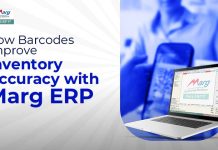Introduction
Setting up a company can be an exciting and rewarding endeavor, but navigating the process of company incorporation can be a daunting task. Ontario, Canada’s most populous province and a thriving hub for business, offers a favorable environment for entrepreneurs to establish their ventures. In this comprehensive guide, we will walk you through the process of company incorporation in Ontario, providing you with the essential knowledge to kickstart your entrepreneurial journey.
Understanding Company Incorporation:
Before delving into the specifics, it’s crucial to grasp the concept of company incorporation. Incorporation refers to the legal process of forming a distinct legal entity separate from its owners. By incorporating your business, you establish it as a separate legal entity with rights and responsibilities that are distinct from those of its owners.
Choosing a Business Structure:
The first step in the incorporation process is to determine the most suitable business structure for your venture. In Ontario, you can choose between three common types: sole proprietorship, partnership, or corporation. Each structure has its own advantages and considerations, so it’s important to understand their implications and select the one that aligns with your business goals.
Selecting a Name:
Choosing an appropriate name for your company is a significant decision. It should reflect your brand identity, be unique, and comply with the legal requirements set by the Ontario government. Conducting a name search to ensure its availability and registering it with the appropriate authorities are crucial steps in the process.
Articles of Incorporation:
The next step is to prepare the Articles of Incorporation, which outline the fundamental details of your
company. These documents typically include the company name, address, share structure, purpose, and the initial directors of the corporation. It is important to draft these articles carefully, as they lay the foundation for your business.
Share Structure and Shareholders:
Determining the share structure and identifying shareholders are integral parts of company incorporation. You must decide on the number and type of shares your corporation will issue, as well as the rights and privileges associated with each class of shares. Additionally, you need to identify the initial shareholders who will hold these shares.
Directors and Officers:
Appointing directors and officers is an essential aspect of the incorporation process. Directors are responsible for the overall management and decision-making of the company, while officers handle day-to-day operations. In Ontario, a corporation must have at least one director, who can also serve as an officer, but it is advisable to have multiple individuals to distribute responsibilities effectively.
Registering with the Government:
To finalize the incorporation, you must register your company with the appropriate government agencies. In Ontario, this involves submitting the Articles of Incorporation, along with the required fees, to the Companies and Personal Property Security Branch (CPPSB) of the Ministry of Government and Consumer Services.
Post-Incorporation Obligations:
Once your company is incorporated, there are several ongoing obligations to fulfill. These include maintaining proper corporate records, filing annual reports, holding annual general meetings, and complying with tax regulations. Staying on top of these obligations ensures your business remains in good standing with the government.
Conclusion
Incorporating a company in Ontario can be a complex process, but with the right knowledge and guidance, it becomes a manageable endeavor. By understanding the steps involved, choosing the appropriate business structure, and complying with legal requirements, you can successfully incorporate your company in Ontario and embark on your entrepreneurial journey. Remember to consult with professionals, such as lawyers and accountants, to ensure compliance and maximize your chances of success. Good luck on your path to building a thriving business in Ontario!
Other Related Blogs: Section 144B Income Tax Act
Frequently Asked Questions (FAQs)
Q1: What are the advantages of incorporating a company in Ontario?
A: Incorporating a company in Ontario offers several advantages, such as limited liability protection, credibility and professionalism, access to government programs and grants, potential tax benefits, and the ability to raise capital by issuing shares.
Q2: How long does the company incorporation process in Ontario take?
A: The timeframe for incorporating a company in Ontario can vary, but typically it takes around 1-4 weeks. The duration depends on various factors, including the type of business structure, accuracy of documentation, and the processing time of government agencies.
Q3: Can a non-resident of Canada incorporate a company in Ontario?
A: Yes, non-residents can incorporate a company in Ontario. There is no citizenship or residency requirement for incorporation. However, it is advisable to seek professional guidance to understand the legal and tax implications for non-resident directors and shareholders.
Q4: What is the minimum number of directors required for an Ontario corporation?
A: An Ontario corporation must have at least one director. However, it is recommended to have multiple directors to distribute responsibilities effectively and ensure smooth decision-making.
Q5: What are the ongoing compliance requirements after incorporating a company in Ontario?
A: After incorporation, you must fulfill various ongoing compliance requirements, including maintaining proper corporate records, filing annual reports with the government, holding annual general meetings, and complying with tax obligations. Failure to meet these obligations can result in penalties or loss of good standing.
Q6: Can I change the name of my Ontario corporation after incorporation?
A: Yes, it is possible to change the name of an Ontario corporation after incorporation. However, the process involves specific legal requirements and may require the approval of the shareholders and government authorities. Consulting with a legal professional is advisable to ensure a smooth name change process.
Q7: Can I convert my sole proprietorship or partnership into an Ontario corporation?
A: Yes, it is possible to convert a sole proprietorship or partnership into an Ontario corporation. This process is known as a “business entity conversion.” It involves legal procedures and requirements, including amending existing agreements and transferring assets and liabilities to the new corporation.
Q8: What are the taxation considerations for Ontario corporations?
A: Ontario corporations are subject to federal and provincial taxes. They must file annual corporate tax returns and pay taxes on their profits. Ontario offers various tax incentives and deductions for businesses, and consulting with a tax professional is recommended to maximize tax benefits and ensure compliance.
Q9: Can I incorporate online in Ontario, or do I need to visit a government office?
A: Yes, it is possible to incorporate a company in Ontario online through the Ontario Business Registry. The online process allows you to submit the necessary documents and pay the fees electronically, eliminating the need for in-person visits to government offices.
Q10: Is it necessary to hire a lawyer or accountant for company incorporation in Ontario?
A: While it is not mandatory to hire a lawyer or accountant, it is highly recommended to seek professional guidance during the company incorporation process. Lawyers can provide legal advice, draft necessary documents, and ensure compliance with regulations, while accountants can assist with financial considerations and tax planning. Their expertise can help streamline the process and avoid potential pitfalls.




















